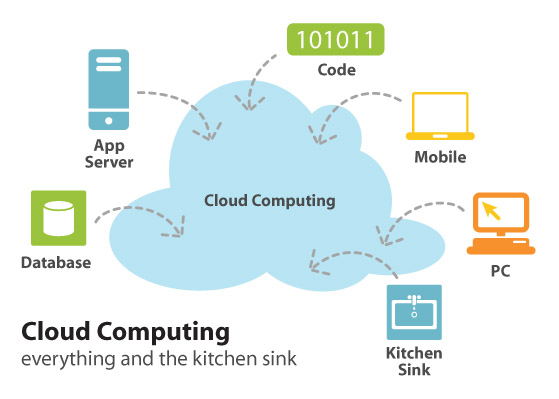A survey of more than 1,000 American adults was conducted in August 2012 by Wakefield Research and shows that while the cloud is widely used, it is still misunderstood. For example, 51 percent of respondents, including a majority of Millennials, believe stormy weather can interfere with cloud computing.
Nearly one third see the cloud as a thing of the future, yet 97 percent are actually using cloud services today via online shopping, banking, social networking and file sharing. Despite this confusion, three in five (59 percent) believe the “workplace of the future” will exist entirely in the cloud, which indicates people feel it’s time to figure out the cloud or risk being left behind in their professional lives.

People remain confused about the Cloud
These survey responses show there is a significant disconnect between what Americans know, what they pretend to know, and what they actually do when it comes to cloud computing. Among the key findings:
- People feign knowledge about the cloud: One in five Americans (22 percent) admit that they’ve pretended to know what the cloud is or how it works. Some of the false claims take place during work hours, with one third of these respondents faking an understanding of the cloud in the office and another 14 percent doing so during a job interview. Interestingly, an additional 17 percent have pretended to know what the cloud was during a first date. Younger Americans are most likely to pretend to know what the cloud is and how it works (36 percent ages 18-29, 18% ages 30 and older), as are Americans in the West (28 percent West, 22 percent U.S.)
- You’re not alone: While many admit they don’t understand the cloud, 56 percent of respondents say they think other people refer to cloud computing in conversation when they really don’t know what they are talking about.
- What is it, anyway?: When asked what “the cloud” is, a majority responded it’s either an actual cloud (specifically a “fluffy white thing”), the sky or something related to the weather (29 percent). Only 16 percent said they think of a computer network to store, access and share data from Internet-connected devices. Some of the other verbatim responses include:Toilet paper, pillow, smoke, outerspace, cyberspace, mysterious network, unreliable, security, sadness, relaxed, overused, oh goody a hacker’s dream, storage, movies, money, memory, back-up, joy, innovation, drugs, heaven and a place to meet.
- Many use it, few understand it: A majority of Americans (54 percent) claim to never use cloud computing. However, 95 percent of this group actually does use the cloud. Specifically, 65 percent bank online, 63 percent shop online, 58 percent use social networking sites such as Facebook or Twitter, 45 percent have played online games, 29 percent store photos online, 22 percent store music or videos online, and 19 percent use online file-sharing. All of these services are cloud based. Even when people don’t think they’re using the cloud, they really are.
- Can the cloud save the economy?: Even though many Americans don’t know exactly what the cloud does, they see its silver lining. Most Americans (68 percent) recognize the economic benefits after learning more about the cloud. The most recognized benefits are that the cloud helps consumers by lowering costs (35 percent), spurs small business growth (32 percent) and boosts customer engagement for businesses (35 percent). Millennials are most likely to believe that the cloud generates jobs (26 percent Millennials, 19 percent Boomers).
- Softer advantages, like working from home in the buff: People offered additional, unexpected benefits of the cloud, including the ability to access work information from home in their “birthday suit” (40 percent); tanning on the beach and accessing computer files at the same time (33 percent); keeping embarrassing videos off of their personal hard drive (25 percent); and sharing information with people they’d rather not interact with in person (35 percent).
- Concerns include cost, security, privacy: Despite these advantages, Americans still have reasons why they limit their use of cloud computing or avoid it entirely. Among those who hardly ever or never use the cloud, the top three deterrents are cost (34 percent), security concerns (32 percent) and privacy concerns (31 percent).
 English
English  Vietnamese
Vietnamese 

